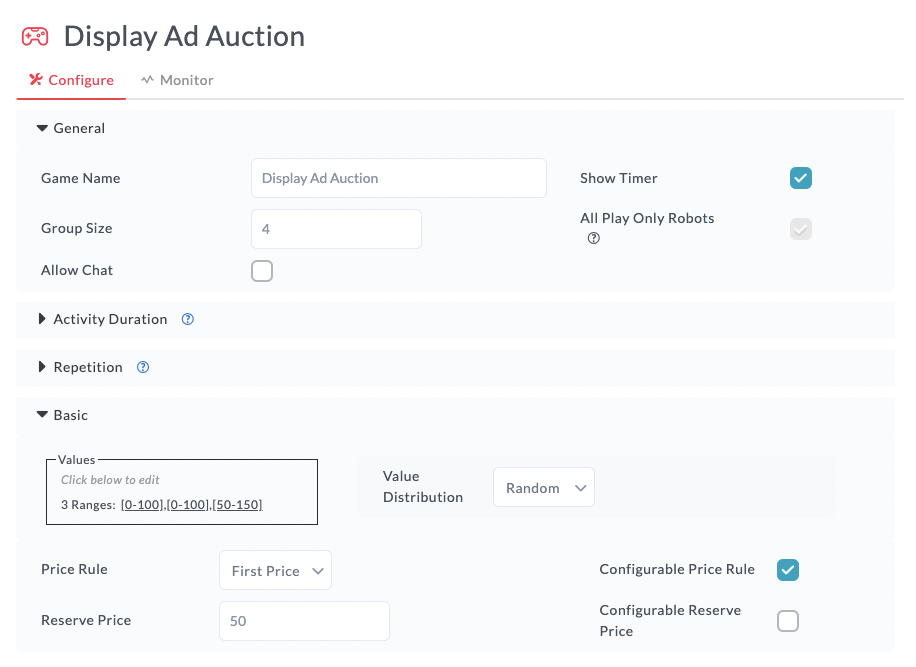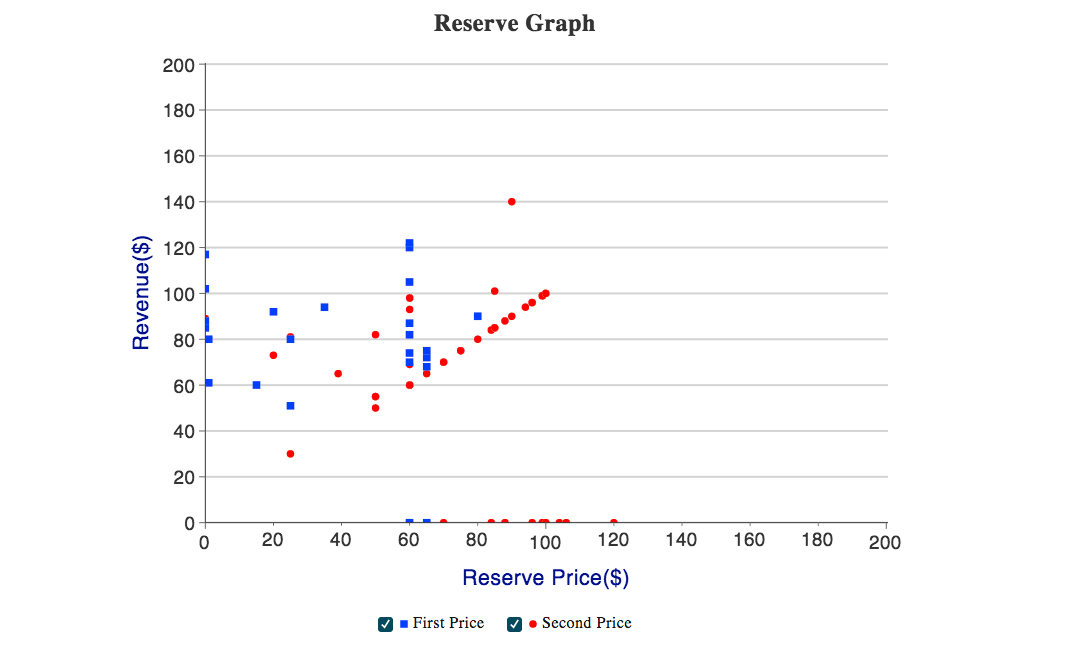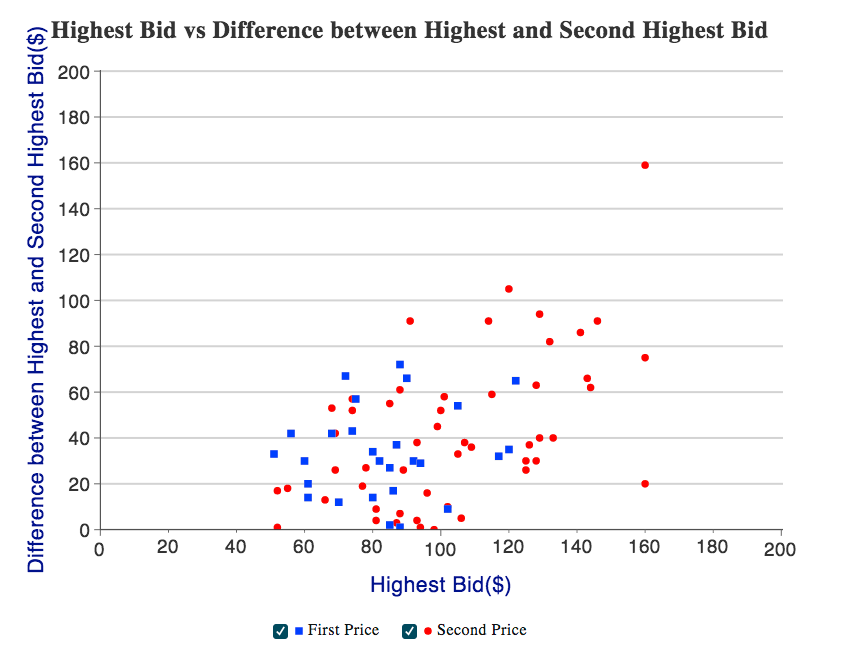Introduction
Few economic allocation mechanisms are so widely used for the transaction of goods and services as auctions. Auctions come in various formats, and we have already taken a look at our common value auctions in an earlier blog post. Today we will be exploring private value auctions and specifically at our display ad auction game.
Some necessary theory
But first some terminology and background. What do we mean by private value? This means that the individual buyers know their own value for the object but typically do not know the value of the other buyers. Consequently, buyers have to formulate an optimal bidding strategy given their value draw.The optimal auction bidding strategy in term is affected by the pricing rule. In general, there are two kinds of pricing rules: the first price and second price rule. Under the first price rule, the winner pays her bid to the auctioneer while under the second price rule, the winner pays the highest non-winning bid. For example, assume that under the second price rule there are two bidders who submit their bids for an object in sealed envelopes. One submits a bid of $1,000 and the other a bid of $1,200. In this case the buyer who bid $1,200 wins the auction and pays $1,000.

Our display ad auction bidding strategy game
Based on what we just learned, we can classify the display ad auction game as a private value auction in which buyers submit their bids without knowing what others have bid (which is referred to as a sealed bid auction). A useful teaching point in this game is that instructors can choose either pricing rule, giving students the opportunity to formulate optimal bidding strategies for either.In practice, this game auctions off advertisement spaces on a website for each visitor to the website. That is when a person visits the Steaming Panda Spa website, an almost instantaneous auction is conducted that determines which advertisement the visitor is going to see. The advertisement bids were previously submitted by the companies interested in using that advertising space. A nice real world example for your students is that this mechanism is used by companies like Google for determining which advertisement to show them for any search they conduct. We want to highlight two aspects that make this game stand out among our auction games.
Students are in the shoes of the auctioneer and the bidder
In contrast to our English or Descending Clock-Auctions, your students experience this auction not just as a bidder but also as a seller of the ad space. This provides a nice way to complement your auction lectures by showing students both sides of the coin - the one holding up the paddle and the one hammering down the gavel. To make the game cover the full range of auction theory concepts, we have given you a plethora of parameter settings to tease out the specific point you want to make. You can allow students to set their own reserve price and their own price rule to learn about revenue maximization for sellers with different reserve prices and pricing rules. Conversely, students will learn about bidding strategies with different pricing rules and for different reserve prices. For a deeper dive into optimal strategies for different auction configurations, we refer the interested reader to the article of Milgrom and Weber, 1982.
A great game to use as an Online Assignment for outside of class
Since one unique feature of this game is the seller role (auctioneer) for students, this game lends itself very naturally to an online assignment for students to complete outside of class. Simply add it to an Online Assignment Playlist, schedule it for an assigned timeframe and let your students engage the robotic bidders. The robots play the second price equilibrium strategy of bidding their value (Vickrey 1961).

or sustain empirically the difference in optimal bidding behavior under first and second price rules


